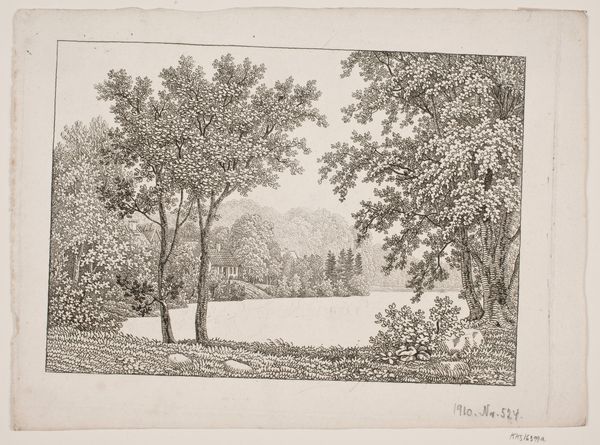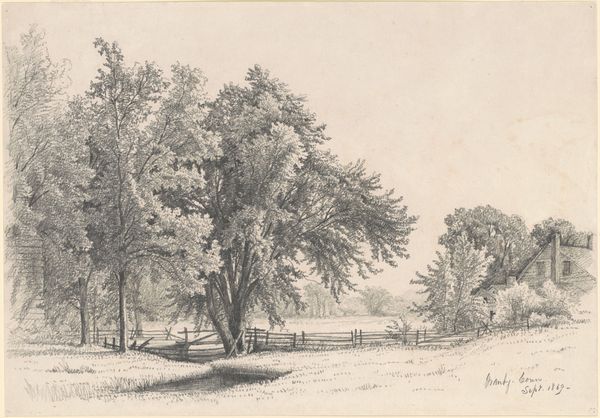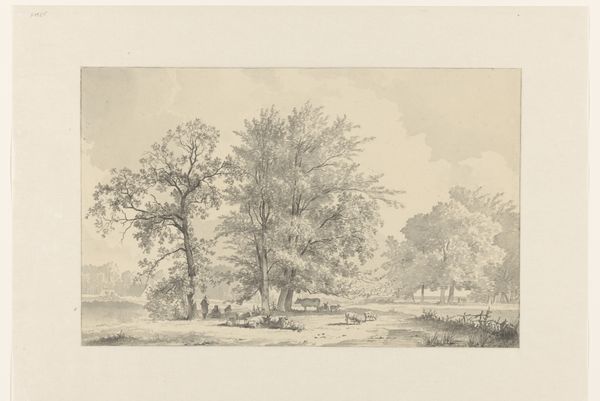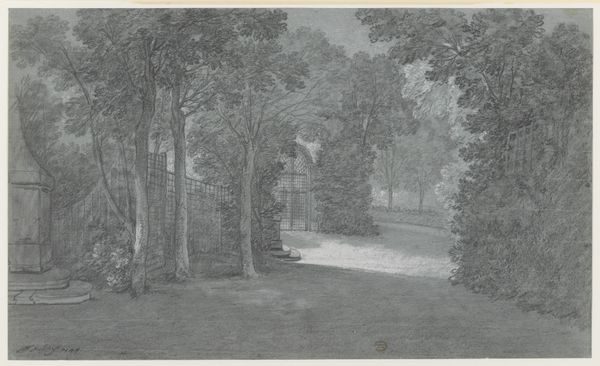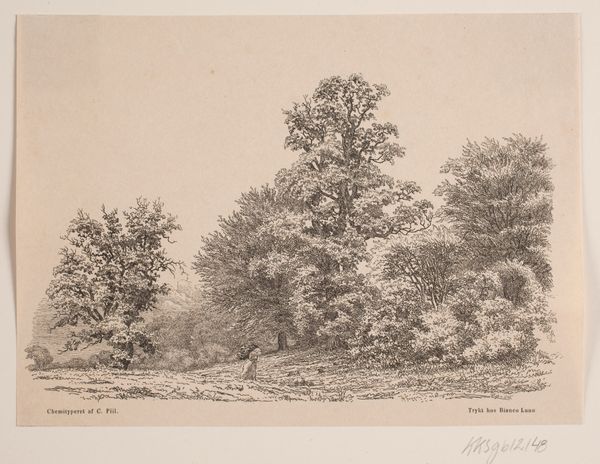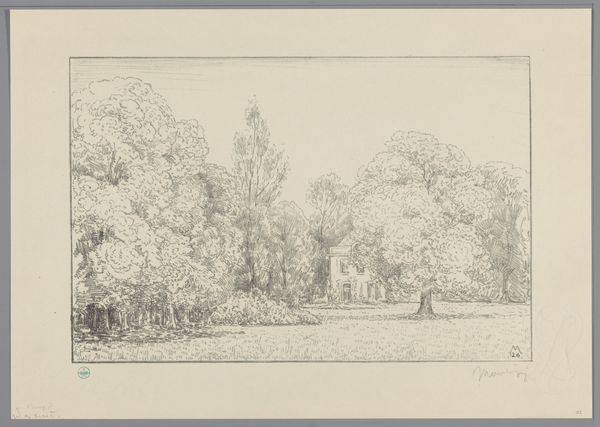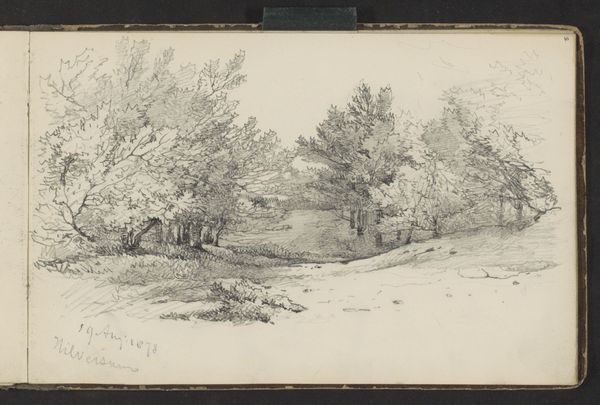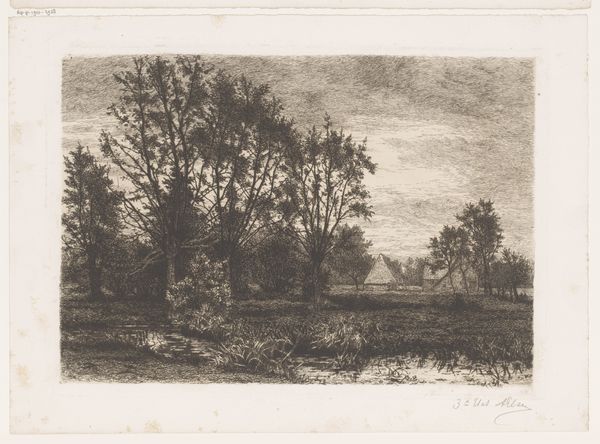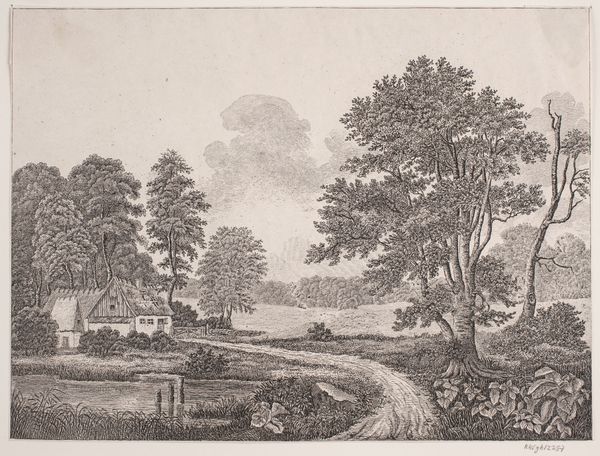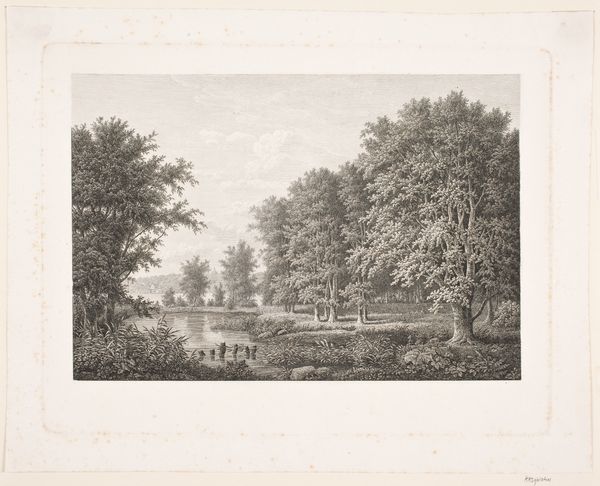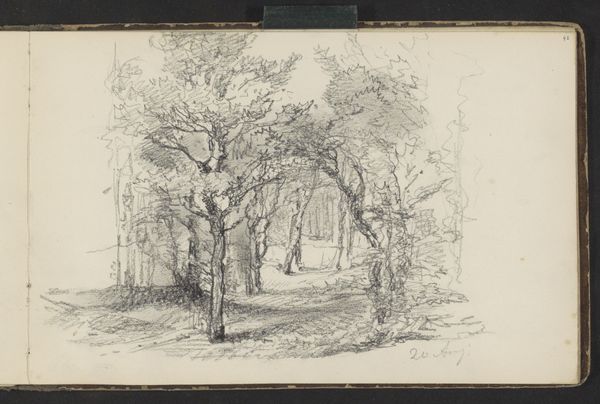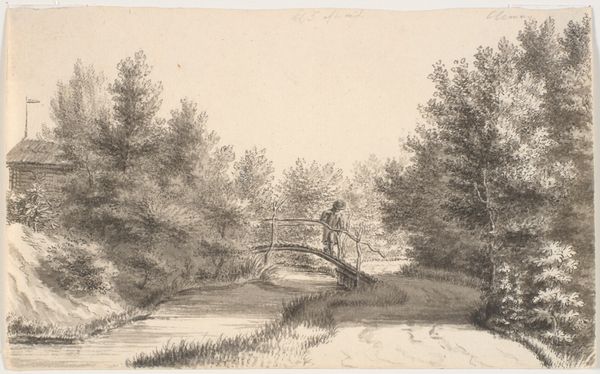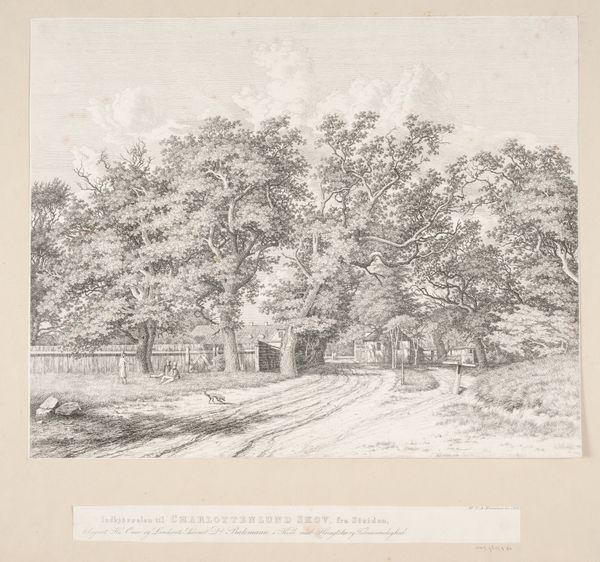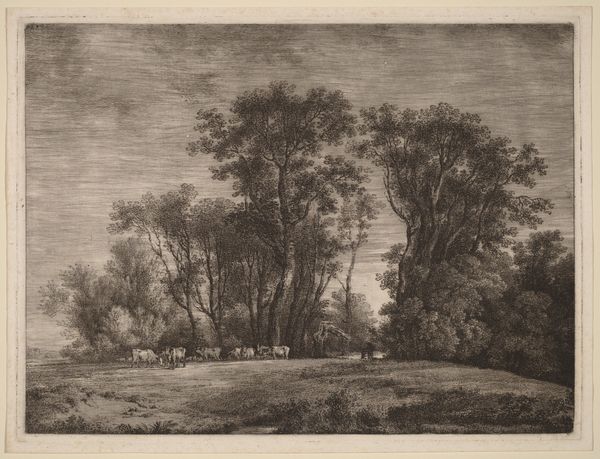
print, etching, engraving
# print
#
etching
#
landscape
#
etching
#
geometric
#
line
#
engraving
#
realism
Dimensions: 165 mm (height) x 229 mm (width) (bladmaal)
Curator: This is a print entitled "Landskab," dating from between 1788 and 1860. The medium employed here is etching and engraving. Editor: My first thought? Quiet. An almost meditative stillness permeates this image, doesn’t it? The lack of vibrant color contributes, lending a somewhat detached and serene quality. Curator: The formal arrangement certainly lends itself to that feeling. Note how the composition leads your eye along the subtle path toward the building nestled within the copse of trees, grounding the view and then permitting your vision to gradually climb, assessing different levels in measured perspective. Editor: I find myself thinking about how the Romantic movement was gaining momentum during this period. Artists started moving away from portraits of royalty and aristocracy and moved into focusing more on nature. The piece evokes an imagined past that emphasizes rural life, probably offering some comfort and a vision of purity during a period of massive political and societal upheavals. Curator: Precisely, if we closely examine the linear patterns used, observe how the meticulous use of engraving captures light and texture. This elevates the ordinary. It prompts us to question, ‘What does it mean to ‘see’ this landscape?’ And why are geometric considerations—line, space, form—elevated as aesthetically noteworthy components. Editor: Well, and thinking about audience reception, given its creation during periods of political change…do you see it as something like visual escapism, then? Or perhaps more of a longing for some past sense of order? It seems less about literal land and more about cultural ideas, or, idealized representations of space. Curator: That is possible, yes, but I think we risk falling into an overly biographical reading by overemphasizing socio-political intent. Could it not be argued equally well, though, that we have an exploration of perspective? One focused around geometric rendering—the trees reduced to geometric forms themselves. Editor: Perhaps we’re both right, meeting somewhere in the middle; acknowledging art mirrors life and art mirrors art. These intentional and deliberate strokes highlight a natural realism rooted, but re-presented, through a certain contemporary visual vocabulary. Curator: A fair assessment, indeed, emphasizing how even seemingly simple scenes become quite rich. Editor: Exactly; a silent picture that speaks volumes about looking closely at art history.
Comments
No comments
Be the first to comment and join the conversation on the ultimate creative platform.
